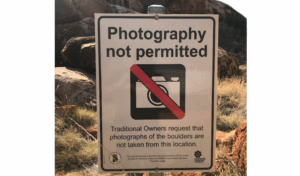
In a landmark achievement, researchers at Northwestern University successfully teleported a quantum state of light over a distance of more than 30 kilometers (approximately 18 miles) through existing fiber optic infrastructure. This demonstration, which occurred in early 2024, marks the first instance of quantum teleportation occurring alongside real internet traffic, a feat once deemed impossible.
The implications of this breakthrough extend far beyond the realm of theoretical physics. While it may not enhance your daily commute or speed up your internet browsing, the ability to teleport quantum states using existing technology signals a significant step towards developing a quantum-connected computing network. This could lead to enhanced data encryption and innovative sensing technologies, paving the way for a revolutionary approach to data communication.
Prem Kumar, a computing engineer at Northwestern University and the lead researcher of the study, expressed his excitement: “This is incredibly exciting because nobody thought it was possible.” Kumar emphasized that this work lays the groundwork for merging next-generation quantum and classical networks within a unified fiber optic framework. He stated, “It opens the door to pushing quantum communications to the next level.”
Understanding Quantum Teleportation
The process of quantum teleportation involves transferring the quantum state of an object from one location to another. This is achieved by destroying the original state while simultaneously creating an identical state at a different location. The teleportation mechanism relies on the principle of quantum entanglement, which requires the transfer of information through a single wave between the two points.
Quantum states are delicate, existing in a haze of probabilities that can quickly collapse into a definite state if disturbed. Protecting these states during transmission, particularly through fiber optic cables congested with internet traffic, poses significant challenges. As Kumar explained, “We carefully studied how light is scattered and placed our photons at a judicial point where that scattering mechanism is minimized.”
To shield the quantum states from interference, the research team implemented various techniques to manage the channel through which the photon’s quantum state traveled. This meticulous approach allowed for quantum communication without disruption from classical data streams.
A New Era for Internet Communications
While previous research had demonstrated the feasibility of transmitting quantum information alongside classical data in simulated environments, Kumar’s team achieved this in a real-world setting. Their work supports the notion that a functional quantum internet is on the horizon, providing engineers with new tools for measuring, monitoring, and encrypting data more effectively than ever before.
Kumar noted, “Quantum teleportation has the ability to provide quantum connectivity securely between geographically distant nodes.” He also highlighted a common misconception: that specialized infrastructure would be necessary for quantum communication. “If we choose the wavelengths properly, we won’t have to build new infrastructure. Classical communications and quantum communications can coexist,” he stated.
The findings from this significant research were published in the journal Optica. As the scientific community continues to explore the integration of quantum technology into existing systems, this achievement will likely serve as a foundational milestone in the evolution of global communications.






